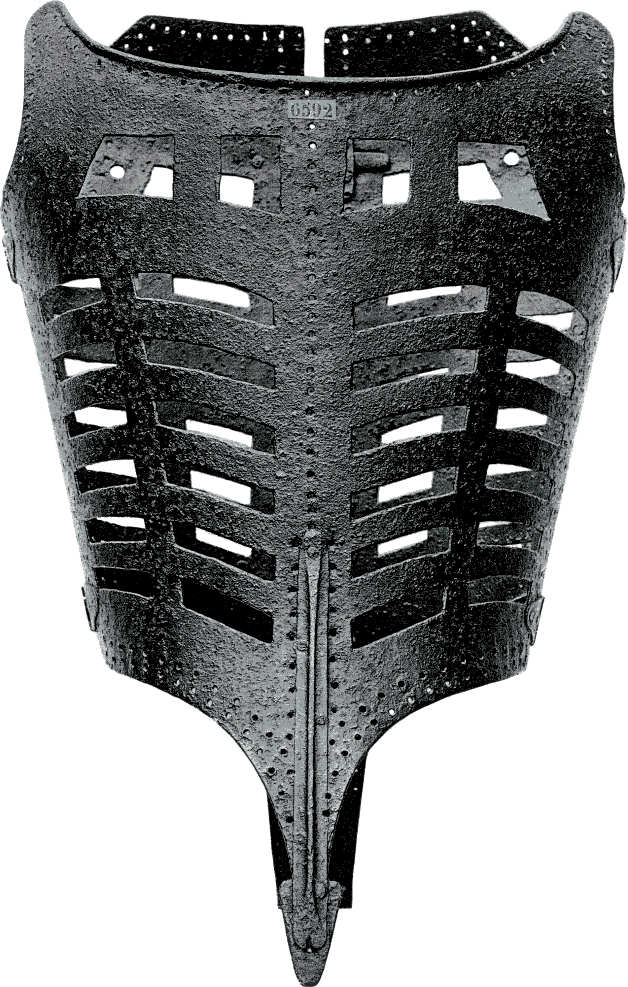The origins of the corset go far back to the beginnings of dress as we know it. Many samples of what appear to be archaic corsets consisted of pieces of leather laced together with the intention of being tied around the ribs and waist. In essence, this was used as a primitive form of "armor" - the lifting of an arm above the head to throw a spear or wield a sword makes the torso of the body extremely vulnerable to sneak-attack piercings. Leather was often used as a tough barrier between the skin and the elements. Although we now know how veritably useless a leather corset for protection is these days, it was all ancient peoples may have had.
This early form of corsetry kept everything in place as well. In a time without bras, girdles, braces, belts and Sealy Posturepedic mattresses, these two pieces of leather laced in front and back came in very useful.
It is stupid to think that the corset was created merely for the sexual appeal we associate it with today. Erogenous zones come and go and while the corset ultimately becomes a symbol of sexuality (primarily in the female domain), it never began as such. Early forms of the corset were not nearly as painful to wear or constrictive as some of the later versions (Elizabeth I never had a 17 inch waist). Although many metal corsets have been found, these were definitely the exception to the norm, and may have even been worn for ceremonial purposes (such as family representation on the battlefield) over a woman's dress.
Iron corset, c. 16th century, courtesy of wikipedia.org
In my history of fashion class, my professor went in-depth on the concept of clothing as armor back in the Renaissance and Baroque periods. The idea of everyday clothing being "segmented", slashed and puffed and tailored separately to create the pieced look of armor, as if to make one look strong on and off the battlefield. A woman's equivalent to armor is the corset - it protects her core, forces her to look stiff and rigid, not slouched and weak. It is a symbol of wealth, privilege and authority. By its wearing, a woman asserts her position as a person of high rank, not to be mistaken as someone who toils in the fields. As my professor so aptly put it, "The corset is about power, not sex".And let's not forget, the corset was androgynous at first. Many evolutions of chest and torso armor emulate that of the corset. Indeed, torso armor is more difficult to maneuver in than corsets of the time, being pure metal as opposed to the softer materials women wore. When off the battlefield, it was also known for men to wear corsets to obtain straight posture - if not a corset then a looser fitting material wrapped several times to get the same effect. In the early 19th century, Dandies made the corset more fashionable for men to wear than women (many women of the time shed their corsets altogether, as men began to cinch their waists instead). Even up until the 1920s, men wore braces eerily similar to corsets for "medical" reasons.
 Courtesy of janeaustensworld.wordpress.com
Courtesy of janeaustensworld.wordpress.com


No comments:
Post a Comment